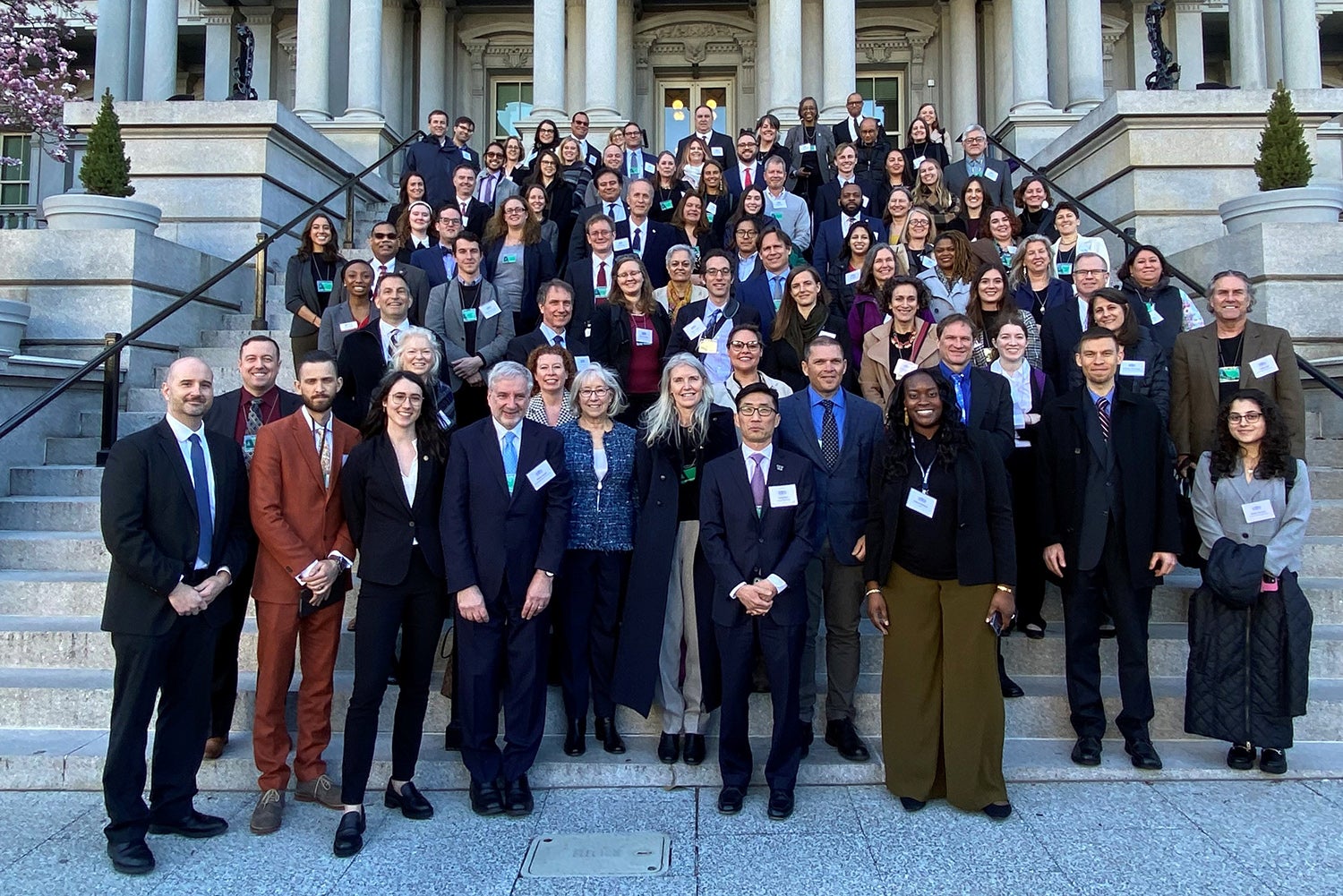As the global climate crisis worsens and the window to mitigate its harmful impacts narrows, institutions of higher education are vital to developing solutions, according to Aurora Winslade, director of Stanford’s Office of Sustainability.

Aurora Winslade is director of Stanford’s Office of Sustainability. (Image credit: Courtesy Aurora Winslade)
“The climate challenge demands a comprehensive response that integrates policy, practice, and equity,” she said. “And universities play an important role in responding to the complex challenge it represents.”
On March 8 and 9, Winslade participated in the White House Forum on Campus and Community-Scale Climate Change Solutions in Washington, D.C., hosted by the White House Office of Science and Technology Policy and the University of Washington. The event convened representatives from universities across the nation for two days of panel talks and discussions to explore how to build on the sustainability work at universities, scale those solutions broadly, and leverage teaching, research, and government resources to meet climate agendas. The event covered many topics, such as modernizing transportation, decarbonizing campuses, and making colleges more climate resilient.
In this Q&A, Winslade discusses key takeaways from the event, how universities and governments partner on sustainability initiatives, and what Stanford is doing to become a greener campus.
How are colleges and universities uniquely positioned to tackle climate change?
Colleges and universities can often be more nimble in implementing goals and solutions, can serve as a balance to corporations and government, and are crucial in the formation of future leaders. Higher education can also pilot and then scale innovative solutions to the climate crisis by working to share and implement them in partnership with communities across the country.
Universities take cutting-edge research and technology and apply it to their campus as a test bed or living laboratory. At Stanford, we can maximize our resources and position the university as an influential entity to showcase how a climate solution is viable and scalable for the rest of the world.
Colleges and universities serve as a nexus-point for sharing information with regional and statewide actors on how to scale climate solutions, particularly since climate challenges and solutions are inherently place-based.

The White House Forum on Campus and Community-Scale Climate Change Solutions in Washington, D.C., convened representatives from university across the nation, including Stanford. (Image credit: Courtesy Aurora Winslade)
How do universities connect with governments and other organizations to address climate change?
Governments act as conveners through existing programs within federal agencies such as the Department of Energy, the National Science Foundation, and the U.S. Department of Agriculture. Several national professional organizations such as the Association for the Advancement of Sustainability in Higher Education act as clearinghouses, network builders, and strategic partners for higher education leaders implementing climate solutions on campus and in partnership with their local communities.
Can you share a brief recap of the presentation you gave at the forum about some of Stanford’s campus sustainability accomplishments?
In my presentation, I discussed Stanford’s Sustainable Energy System Innovations (SESI) program that has transformed our energy system from a fossil fuel–based system to 100% renewable, grid-sourced electricity. Investments in SESI and ongoing energy-efficiency retrofits have reduced campus greenhouse gas emissions by nearly 80%.
I also discussed the Stanford Doerr School of Sustainability’s Impact Accelerator, and how SDSS collaborates with Land, Buildings and Real Estate at Stanford. Together, they are accelerating the pace of innovation through projects such as the COOLER Research Program, the Codiga Resource Recovery Center, and the new Living Lab Fellowship Program launched by LBRE’s Office of Sustainability and the Bill Lane Center for the American West.
It’s also worth noting that over the past 21 years, conservation projects, implementation of SESI, retrofits, capital improvements, and behavior changes at Stanford have reduced potable water usage by 48%, or a reduction of 1.3 million gallons on an average day in 2021 compared to 2000.
How do Stanford’s sustainability efforts compare to those of other institutions?
Stanford is among 11 universities that have achieved Platinum status – the highest rating – on the STARS framework by the Association for the Advancement of Sustainability in Higher Education (AASHE). Stanford also performed well in AASHE’s 2022 Sustainability Campus Index, which recognizes top-performing colleges and universities overall by institution type and in 17 sustainability impact areas. Stanford ranked in the following categories: Diversity & Affordability – 1st; Energy – 2nd; Curriculum – 5th; Food & Dining – 5th; Doctoral Institutions (overall) – 7th; and Water – tied for 9th.
What makes Stanford’s sustainability efforts unique among American universities?
Stanford is one of the largest residential campuses in the country and is one of the largest campuses based on contiguous land. Stanford also manages its own waste, energy, and water systems. This makes Stanford a great test bed for new ideas and innovation. It also has access to a wide range of experts and research through the new Doerr School of Sustainability, and additional institutes such as the R&DE Stanford Food Institute. These characteristics make Stanford great at accelerating solutions that can work at city and regional scales.
Any final thoughts?
There is a tremendous amount of innovative work already underway around the nation. There are also many opportunities for higher education leaders, government agencies, and local communities to partner to scale and accelerate the pace and adoption of innovation.
Read more about the White House Forum on Campus and Community-Scale Climate Change Solutions.